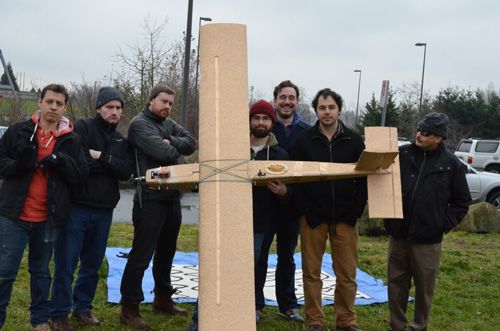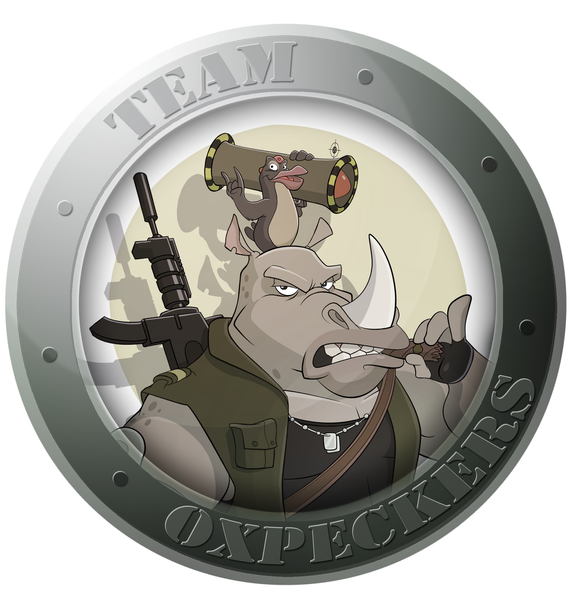
Hi Everyone,
Happy new year! We hope you all had a terrific holiday break. A few of us here in Portland, Oregon had a pretty exciting December. We finished up our UAV crowd source challenge with ADX Portland and Fusion 360 community member Stan Hisel. We’re really excited to share with you how it went!
Last December, two teams in Portland, Oregon participated in a one-week challenge to design small, inexpensive, fixed wing unmanned aerial vehicles with the purpose of surveying wildlife preserves to help prevent poaching. Fusion 360 Community member Stan Hisel provided initial guidance, onsite mentoring over the first weekend, a starter foam material kit, and a Fusion 360 model. Then he set the teams loose to see what they could design and figure out.
When he returned the following week, he was greeted on fly day with two assembled, cost-effective, and flyable UAVs. Take a look at the documentary we put together. We took a bunch of pictures too. Enjoy! I’m sure you’ll enjoy both the crashes and the obvious successes they achieved in the footage. Great job guys!
Why Stan?
Stan Hisel is a professional unmanned aerial vehicle (UAV) designer. Stan believes, as do many others in the drone community, that open source UAV technology available today and can efficiently and cheaply survey wildlife preserves better than conventional human aerial surveillance teams can. He’s already deeply involved in projects that use civilian UAV technology for agricultural crop dusting and bird migration research monitoring. For him this is yet another great application of emerging technology that can be used to solve a real and urgently pressing issues.
Why Rhinos?
946 rhinos were poached last year in South Africa. Morbidly, this was actually an achievement to keep the number under 1k. Early projections had the milestone as being inevitable. For context, there are just over 5,000 black rhinos left (at all) on the planet. Moral victory aside, the 946 statistic contains a mix of black and gray rhinos who were removed from a region of the world that contains over 80% of the world’s remaining rhino population. This year was a profound loss. The numbers will get worse too unless corrective action is taken.
Onward to the global “Wildlife UAV Conservation Challenge!”
So why did we do such a short challenge in December? Well, because this February kicks off a much bigger global competition to go after tackling this problem. It’s called the Wildlife UAV Conservation Challenge and our teams are going to participate in it. This is a worldwide competition with prize money and a trip to South Africa at stake. Both teams met last Sunday at ADX and assembled an exciting new blend of the old team members and a few new injections of needed talent to help in the areas of the wcuavc challenge that delve into surveillance systems. There are over 100 teams already entered in this challenge and it is anticipated to be highly competitive.
Team entries will be submitted by the end of February. We’ll be following their progress! Everything they are doing is open source. If you want to be part of it just shoot me an email at michael.aubry@autodesk.com with your Fusion ID and I’ll add you to our hub. When Fusion 360 goes live with public groups we’ll have that made available as well.
Again, congrats to both “Team Oxpecker” and “Team Drone Thugz and Harmony” on your initial successes and good luck in your next phase!
How’d Fusion 360 do in all of this?
How’d our CAD friend do you ask? Pretty well actually! Going into this event we had no idea how much of a role Fusion was going to play. Very few of the 20+ people involved had ever used it, and using Fusion wasn’t a requirement at all to participate. We didn’t offer any prize or added incentive to model in it aside from giving them access to the initial cad model and a few workflow video ideas we had of how Fusion might help them. If it helped, cool. If not, no big deal. So, basically we asked 20+ people to build an airplane and learn a new cad/collaboration tool in a week. Was this crazy?
Actually, no! Fusion got used. We saw real and substantial use cases developed organically. The teams used Fusion 360 to:
- Create their hot wire cutter profiles to remove sections from their fuselages by exporting dxf files for laser cutting.
- Add stiffening ribs to the control surfaces (wings, rudders, etc)
- Create different wing profiles via SVG file imports from open source airfoil profile websites
- Model their motor mounts.
- Take model measurements.
- Access a common events calendar.
It was exciting to see in this real design challenge as it went down what really worked (and didn’t work). Our development team was there watching and taking notes. Over the week we had support from various people on our user experience, quality assurance and product management teams. It’s all part of our ongoing effort to make sure we really understand what’s important as we continue developing.
But enough Fusion. Let’s get back to talking about the teams, what they accomplished, and where to go next. All in all this was a fantastic event and we hope to do more events like this with you in our community in the future. If you’ve got ideas like this and want to work on a project let us know! What problem do you think we together as a design community should be helping to solve?
Let’s go save some animals!
Very Best,
Mike Aubry and the Fusion 360 Team


Team Drone Thugz n Harmony – Members (left to right): Duncan O’Bryan, Matt Kennedy, Alex McManus, Will Watson, Dan Klancnik, Jeb Boniakowski. Not Pictured: Collin Blinder, Catherine Poole.


Team Oxpeckers – Members (left to right): Brad Yeomans, James Ward, Julie Steele, Lauren Lieu.
Image Credit: Logo Designed by Alex Henderson @ http://artofalexhenderson.blogspot.com














































